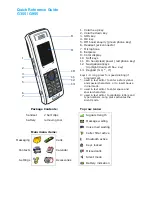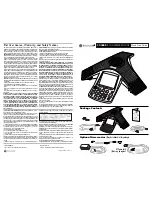
18
available for sale to the public, it must be tested and certified to
the FCC that it does not exceed the limit established by the
government-adopted requirement for safe exposure. The tests
are performed in positions and locations (that is, at the ear and
worn on the body) as required by the FCC for each model. For
body worn operation, this phone has been tested and meets FCC
RF exposure guidelines when the handset is positioned a
minimum of 15 mm from the body with an accessory that
contains no metal part. Use of other accessories may not ensure
compliance with FCC RF exposure guidelines.
The SAR limit adopted by the USA and Canada is 1.6
watts/kilogram (W/kg) averaged over one gram of tissue. The
highest SAR value reported to the FCC and IC for this device
type when tested for use at the ear is
0.662
W/kg, and when
properly worn on the body is
0.477
W/kg.
The SAR limit adopted by the ICNIRP is 2.0W/kg over one gram
of tissue. The value guarantees a safe distance to protect mobile
phone users and the difference caused by measurement errors.
Under different test requirements and frequency, the value
varies.
Statement
This equipment has been tested and found to pursuant to Part 15
of the FCC Rules. These limits are designed to provide
reasonable protection against harmful interference in a
residential installation. Operation is subject to the condition that
this device does not cause harmful interface.
This equipment generates, uses and can radiate radio frequency
energy and, if not installed and used in accordance with the
instructions, may cause harmful interference to radio
communications. However, there is no guarantee that
interference will not occur in a particular installation. If this
equipment does cause harmful interference to radio or television
reception, which can be determined by turning the equipment off


































